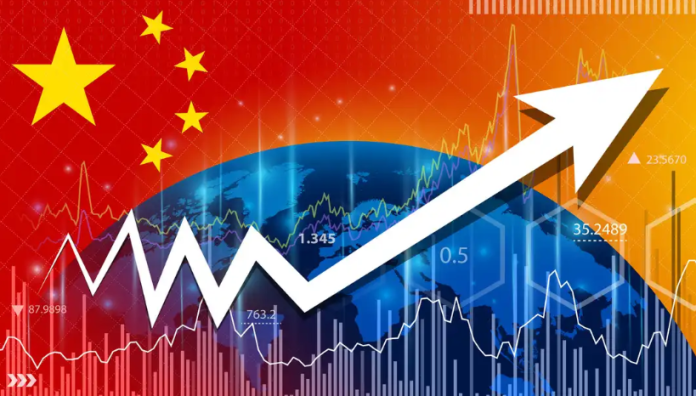
By Brig Syed Karrar Hussain Retired
In the modern world of economic competition, no nation has risen with such speed, scale, and sustainability as China. From the ancient Silk Route to the digital trade highways of today, China’s economic journey reflects unmatched resilience, vision, and discipline. Once known for silk, tea, and porcelain, it now dominates every sector — from electronics and automobiles to artificial intelligence and space technology. Truly, China stands as the unopposed king of the economic kingdom — a power whose influence reaches every corner of the globe.
Historical Progress: From Silk to the Modern World
China’s story as a trading and manufacturing empire dates back over two millennia. During the Han Dynasty (206 BCE – 220 CE), the Silk Route connected China with Persia, Arabia, and Europe. It was not just a network of trade but a symbol of Chinese craftsmanship and intellect. Silk, porcelain, tea, and paper travelled from China to distant lands, bringing with them not only goods but also ideas, art, and culture.
In the Tang and Song periods, China led the world in science and innovation. The compass, printing, and gunpowder changed human civilization forever. Chinese artisans, farmers, and merchants created one of the most self-sufficient and prosperous societies on earth.
However, the 19th century brought humiliation and stagnation. The Opium Wars, unequal treaties, and colonial exploitation weakened the Chinese empire. But the spirit of self-reliance never died. In 1949, the founding of the People’s Republic of China marked a new beginning under the leadership of Mao Zedong, who unified the country and built the foundation for independence and industrial growth, though often through hardship.
The real transformation came in 1978 under Deng Xiaoping. His vision of “socialism with Chinese characteristics” turned the wheels of change. China opened its economy to the world, allowing private enterprise, foreign investment, and trade reforms. In just four decades, China rose from poverty to power, becoming the world’s second-largest economy and the only country to industrialize at such breathtaking speed.
Policies That Attracted the World’s Traders
China’s economic rise is no miracle — it is the outcome of intelligent, long-term policies and extraordinary national discipline.
1. Open Door and Reform Policy:
Deng Xiaoping’s 1978 reforms welcomed foreign investors and introduced Special Economic Zones (SEZs) in cities like Shenzhen, Zhuhai, and Xiamen. These zones offered tax benefits, infrastructure, and freedom for international companies to operate — a move that brought capital, skills, and technology into China.
2. Manufacturing Powerhouse:
China built a strong foundation in manufacturing through low-cost labor, modern infrastructure, and large-scale industrial zones. From household goods to smartphones, “Made in China” became a global symbol of affordability and availability.
3. Massive Infrastructure Development:
No nation has built infrastructure as rapidly as China. Highways, high-speed rail, ports, and power grids were developed with strategic planning. This infrastructure not only supports domestic growth but also positions China as the center of global trade routes.
4. The Belt and Road Initiative (BRI):
Launched in 2013, the BRI connects Asia, Europe, and Africa through roads, ports, and railways. It is a modern Silk Route, expanding China’s economic and diplomatic reach while creating trade dependencies with over 140 countries.
5. Technology and Innovation:
In the last two decades, China has shifted from being the world’s factory to a center of innovation. Companies like Huawei, Alibaba, BYD, and Xiaomi now lead in AI, e-commerce, green energy, and electric vehicles.
6. Stable Financial System:
Unlike many economies that allowed uncontrolled liberalization, China maintained tight control over its currency and banking system, ensuring stability and long-term growth.
7. Export and Foreign Investment Policies:
China’s low taxation for exporters, efficient ports, and simplified customs attracted foreign investors. Its focus on vocational training produced a skilled, disciplined workforce — an invaluable advantage in global competition.
Merits of China’s Economic Model
China’s rise offers several undeniable advantages that justify its title as the unopposed king of the economic kingdom:
Mass Poverty Eradication:
Over 800 million people have been lifted out of poverty, the largest economic upliftment in human history.
Industrial and Technological Leadership:
From basic manufacturing to advanced industries, China’s evolution shows unmatched adaptability.
World-Class Infrastructure:
China’s urban planning, transport systems, and energy projects have no equal in the developing world.
Trade Dominance:
It is the largest exporter and second-largest importer globally, holding the world’s biggest foreign exchange reserves.
Political Continuity and Discipline:
Long-term policy planning and centralized governance ensured consistency — something many nations struggle to achieve.
Investment Magnet:
China attracts foreign direct investment (FDI) worth hundreds of billions annually, offering stability and a vast consumer market.
Demerits and Challenges
Even the unopposed king of the economic world faces challenges that must be acknowledged:
Income Disparity:
Despite massive growth, the wealth gap between urban and rural populations is wide.
Environmental Costs:
Industrial pollution, water shortages, and carbon emissions became serious issues, though China now leads in renewable energy to address them.
Aging Population:
The earlier one-child policy has resulted in an aging society, reducing the future labor force.
Dependence on Global Markets:
Heavy reliance on exports makes China vulnerable to trade wars and global recessions.
Geopolitical Tensions:
Its assertive policies in the South China Sea and trade conflicts with the U.S. and EU bring diplomatic pressures.
Still, through careful management, China continues to maintain growth, adapt to new realities, and strengthen its leadership in the global economy.
Lessons for Pakistan
China’s journey holds rich lessons for developing nations like Pakistan, which also seeks rapid industrial growth and economic sovereignty.
1. National Vision and Continuity:
China’s progress is rooted in consistent policies and national unity. Pakistan must form a long-term economic vision that transcends political changes and party agendas.
2. Education and Skill Development:
China focused on science, engineering, and vocational education. Pakistan must invest in its youth through technical education, research centers, and modern universities.
3. Industrialization and Export Orientation:
By building industrial zones under the China-Pakistan Economic Corridor (CPEC) and promoting export-oriented industries, Pakistan can increase employment and foreign reserves.
4. Infrastructure and Energy:
China’s economic boom was powered by massive infrastructure development. Pakistan must prioritize power generation, logistics, and connectivity to attract investors.
5. Discipline, Hard Work, and Accountability:
The dedication of the Chinese workforce and the government’s anti-corruption campaigns are central to its success. Pakistan needs similar integrity and discipline at all levels.
6. Research and Innovation:
China’s transformation from imitation to innovation is a powerful lesson. Pakistan must move from traditional industries to high-tech sectors, encouraging startups and scientific research.
7. Balanced Foreign Policy:
China maintained trade with the West while nurturing relations with developing nations. Pakistan should similarly pursue a balanced, independent foreign policy focusing on economic benefits.
8. Green Economy:
As China transitions to renewable energy and eco-friendly technology, Pakistan should follow suit to combat climate change and attract green investment.
Conclusion
China’s economic story is a saga of determination, intelligence, and unity. From the spinning wheels of silk to the circuits of semiconductors, it has conquered every frontier of production and trade. Its rise is not merely financial — it is civilizational, rooted in centuries of culture and collective effort.
As the unopposed king of the economic kingdom, China stands tall among nations, setting standards in industrial planning, infrastructure, and technology. Its journey proves that with vision, discipline, and perseverance, a nation can transform from poverty to prosperity within a generation.
For Pakistan, China is both a neighbor and a teacher. The friendship between the two countries is not just strategic — it can also be economic and educational. By learning from China’s discipline, industrial policy, and innovative spirit, Pakistan can carve its own path to self-reliance and progress.
The story of China is the story of human willpower — a living lesson that nations rise not by chance but by choice, not by wealth but by wisdom, and not by words but by work.

























